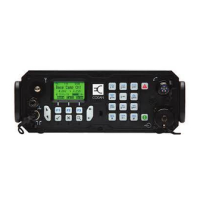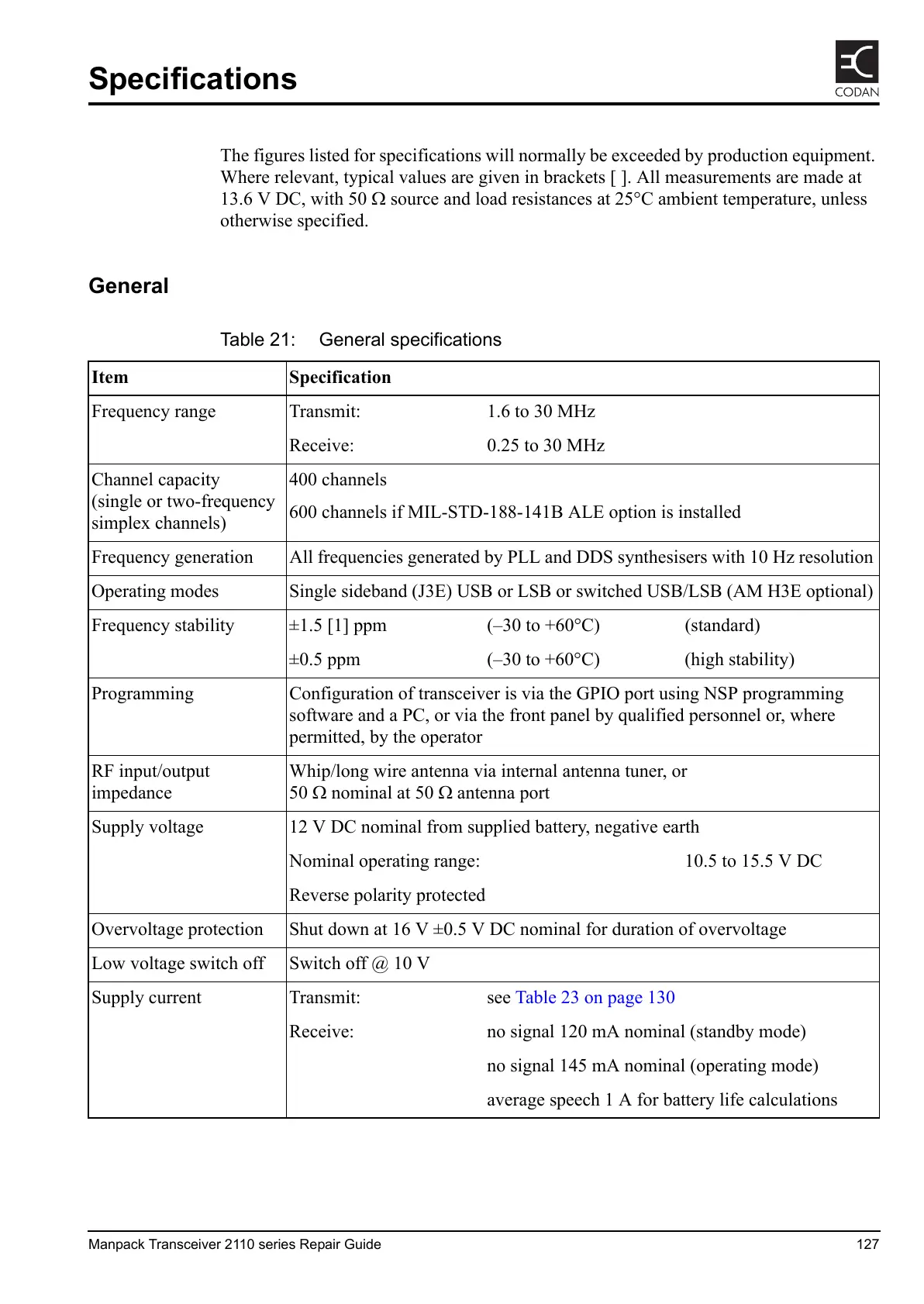Manpack Transceiver 2110 series Repair Guide 127
Specifications
The figures listed for specifications will normally be exceeded by production equipment.
Where relevant, typical values are given in brackets [ ]. All measurements are made at
13.6 V DC, with 50 source and load resistances at 25°C ambient temperature, unless
otherwise specified.
General
Table 21: General specifications
Item Specification
Frequency range Transmit: 1.6 to 30 MHz
Receive: 0.25 to 30 MHz
Channel capacity
(single or two-frequency
simplex channels)
400 channels
600 channels if MIL-STD-188-141B ALE option is installed
Frequency generation All frequencies generated by PLL and DDS synthesisers with 10 Hz resolution
Operating modes Single sideband (J3E) USB or LSB or switched USB/LSB (AM H3E optional)
Frequency stability ±1.5 [1] ppm (–30 to +60°C) (standard)
±0.5 ppm (–30 to +60°C) (high stability)
Programming Configuration of transceiver is via the GPIO port using NSP programming
software and a PC, or via the front panel by qualified personnel or, where
permitted, by the operator
RF input/output
impedance
Whip/long wire antenna via internal antenna tuner, or
50 nominal at 50 antenna port
Supply voltage 12 V DC nominal from supplied battery, negative earth
Nominal operating range: 10.5 to 15.5 V DC
Reverse polarity protected
Overvoltage protection Shut down at 16 V ±0.5 V DC nominal for duration of overvoltage
Low voltage switch off Switch off @ 10 V
Supply current Transmit: see Table 23 on page 130
Receive: no signal 120 mA nominal (standby mode)
no signal 145 mA nominal (operating mode)
average speech 1 A for battery life calculations

